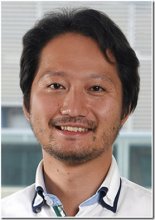Has the scent of freshly baked chocolate chip cookies ever taken you back to afternoons at your grandmother’s house? Has an old song ever brought back memories of a first date? The ability to remember relationships between unrelated items (an odor and a location, a song, and an event) is known as associative memory.
Psychologists began studying associative memory in the 1800s, with William James describing the phenomenon in his 1890 classic The Principles of Psychology. Scientists today agree that the structures responsible for the formation of associative memory are found in the medial temporal lobe, or the famous “memory center” of the brain, but the particular cells involved, and how those cells are controlled, have remained a mystery until now.
Neuroscientists at the University of California, Irvine have discovered specific types of neurons within the memory center of the brain that are responsible for acquiring new associative memories. Additionally, they have discovered how these associative memory neurons are controlled. We rely on associative memories in our everyday lives and this research is an important step in understanding the detailed mechanism of how these types of memories are formed in the brain.
Lead researcher Kei Igarashi, a faculty fellow of the Center for the Neurobiology of Learning and Memory and assistant professor of anatomy & neurobiology at the UCI School of Medicine, joins us today to discuss his lab's findings.
Selected Podcast
EP 1069B - New Research "Sniffs Out” How Associative Memories Are Formed

Featured Speaker:
Kei M. Igarashi, Ph.D.
Kei M. Igarashi, Ph.D. grew up in greater Tokyo and obtained his Ph.D. in the Kensaku Mori lab at the University of Tokyo. He then moved all the way to Trondheim, Norway to join the laboratory of Edvard and May-Britt Moser. There, he experienced a vibrant and exciting new era of memory research, concurrent with the awarding of Edvard and May-Britt’s Nobel Prizes. Kei moved again all the way to California to start his lab in 2016. Tagged under